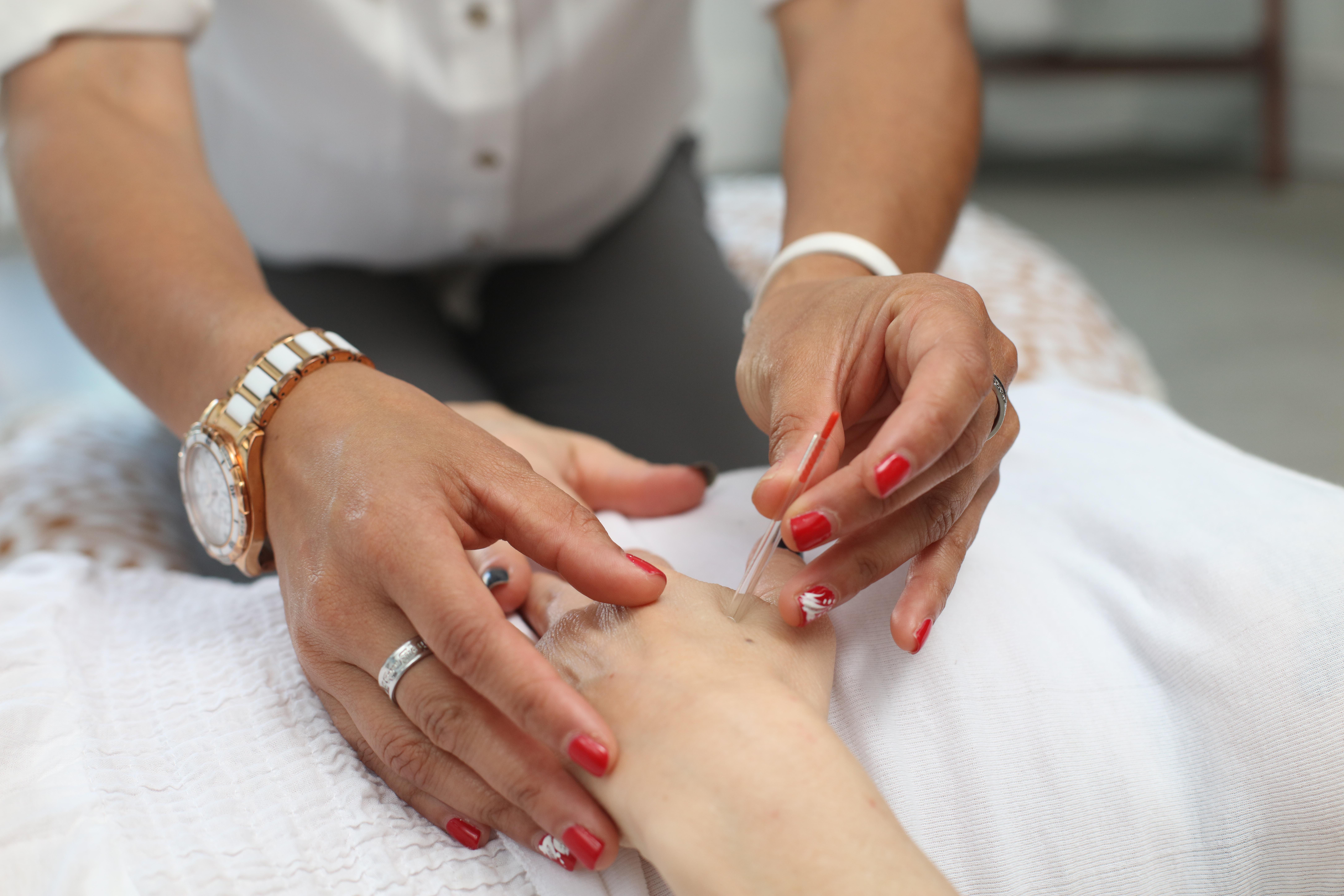Welcome to the world of acupuncture, where healing and ancient wisdom meet. In this article, we will embark on a journey of unlocking the incredible potential held within [number of acupuncture points]. These mystical and powerful points have been revered for centuries, their significance deeply ingrained in traditional Chinese medicine. With each needle meticulously placed, these points possess the power to promote physical and emotional well-being, igniting the body’s innate healing abilities. Join me as we explore the hidden wonders of [number of acupuncture points], unraveling their therapeutic benefits and shedding light on a world of holistic healing.

Exploring the Intricate Network of Acupuncture Points
Acupuncture, a component of traditional Chinese medicine, offers a holistic approach to healing by targeting specific points on the body. These points, known as acupuncture points, hold incredible therapeutic benefits for both physical and emotional well-being. With over a decade of experience as a seasoned acupuncturist, I have delved deep into the world of acupuncture points, discovering the significance, functions, and therapeutic potential associated with each of these vital points.
The meridian system of acupuncture forms the foundation of understanding acupuncture points. It consists of 12 primary meridians and 2 secondary meridians, each corresponding to specific organs and body systems. These meridians act as pathways through which energy, or Qi, flows. By stimulating the right acupuncture points along these meridians, we can restore balance and promote health.
The World Health Organization published a report in 1991 that listed 361 classical acupuncture points. These points are carefully located on the body and have been used for centuries to treat a wide range of ailments. Among the commonly used acupuncture points are Gallbladder 20 (GB20), Large Intestine 4 (L14), Liver 3 (LV3), Pericardium 6 (P6), Spleen 6 (SP6), and Stomach 36 (ST36). Each of these points has its own unique functions and therapeutic benefits.
Acupuncture points can be found on various parts of the body, not just limited to the traditional meridian locations. Ears, nose, scalp, hands, feet, wrists, and ankles all host acupuncture points. These points have names, numbers, and functions related to specific body organs, systems, or conditions. For example, stimulating an acupuncture point on the ear can aid in reducing cravings for those trying to quit smoking.
Let’s take a closer look at the small intestine and spleen meridians as examples. The small intestine meridian has 19 acupuncture points, and each point along this meridian corresponds to different functions and locations on the body. On the other hand, the spleen meridian has 21 acupuncture points, each with its own therapeutic capabilities.
Different health issues and conditions can be effectively addressed using specific acupuncture points. For instance, digestive problems, fatigue, immune deficiency, and even the need for grounding can all benefit from acupuncture treatment. By stimulating the appropriate acupuncture points, we can facilitate the body’s natural healing processes and restore balance to the mind, body, and spirit.
It is fascinating to note that there are over 400 described acupuncture points, with the majority located on the 20 main meridians. These meridians correspond to the body’s internal organs, while eight extraordinary meridians exist bilaterally. However, there are also acupuncture points that do not lie on the major meridians but are still influential in treatment. These “extra points” are part of the jing luo nexus and further broaden the scope of acupuncture therapy.
Incorporating acupuncture into your wellness routine can be a wonderful way to promote overall health and well-being. Each acupuncture point holds its own unique power and healing potential. By unlocking the secrets of these acupuncture points, we can tap into a world of natural healing and bring balance back into our lives.
To provide a comprehensive overview, here is a table showcasing some essential acupuncture points and their functions:
| Acupuncture Point | Location | Function |
|---|---|---|
| Gallbladder 20 | Back of the head | Relieves headaches and neck stiffness |
| Large Intestine 4 | Hand | Alleviates pain, promotes the free flow of energy and blood |
| Liver 3 | Foot | Regulates liver function and reduces stress |
| Pericardium 6 | Wrist | Relieves nausea and anxiety |
| Spleen 6 | Leg | Harmonizes the spleen, regulates menstruation |
| Stomach 36 | Leg | Improves digestion and boosts energy levels |
In conclusion, the world of acupuncture points is a rich and fascinating one. Exploring the intricate network of these points allows us to unlock the healing power within our bodies. By understanding the significance, functions, and therapeutic benefits associated with each acupuncture point, we can harness their potential and achieve physical and emotional well-being. So, why not embark on a journey of natural healing and discover the wonders of acupuncture points?
Acupuncture is a fascinating practice that involves stimulating specific points on the body to promote healing and overall wellness. If you’ve ever wondered just how many acupuncture points there are, you’re in luck! We have the answer for you right here. With over 300 acupuncture points spread across the human body, it’s no wonder that this ancient Chinese therapy has been used for centuries to treat a variety of ailments and conditions. Whether you’re curious about the history of acupuncture or interested in trying it for yourself, click here to discover more about the numerous acupuncture points and their incredible benefits: How Many Acupuncture Points Are There.
FAQ
Q: How many acupuncture points are there in total?
A: There are more than 400 acupuncture points described, with the majority located on the 20 main meridians.
Q: What are the commonly used acupuncture points?
A: Six commonly used acupuncture points are Gallbladder 20 (GB20), Large Intestine 4 (L14), Liver 3 (LV3), Pericardium 6 (P6), Spleen 6 (SP6), and Stomach 36 (ST36).
Q: Can acupuncture points be found on various body parts?
A: Yes, acupuncture points can be found on various body parts such as ears, nose, scalp, hands, feet, wrists, and ankles.
Q: What health issues can acupuncture points treat?
A: Different acupuncture points can be used to treat various health issues, such as digestive problems, fatigue, immune deficiency, and grounding.
Q: Are there any points that are not located on the major meridians?
A: Yes, points that are not located on the major meridians are referred to as “extra points” and are part of the jing luo nexus.
- Unraveling Einstein’s Legacy: Who Inherited His Genius? - July 14, 2025
- Unlock Einstein’s Family Tree: Bernhard Caesar & Untold Stories - July 14, 2025
- Unveiling Bernhard Caesar Einstein: His Life & Albert Einstein’s Legacy - July 14, 2025
















